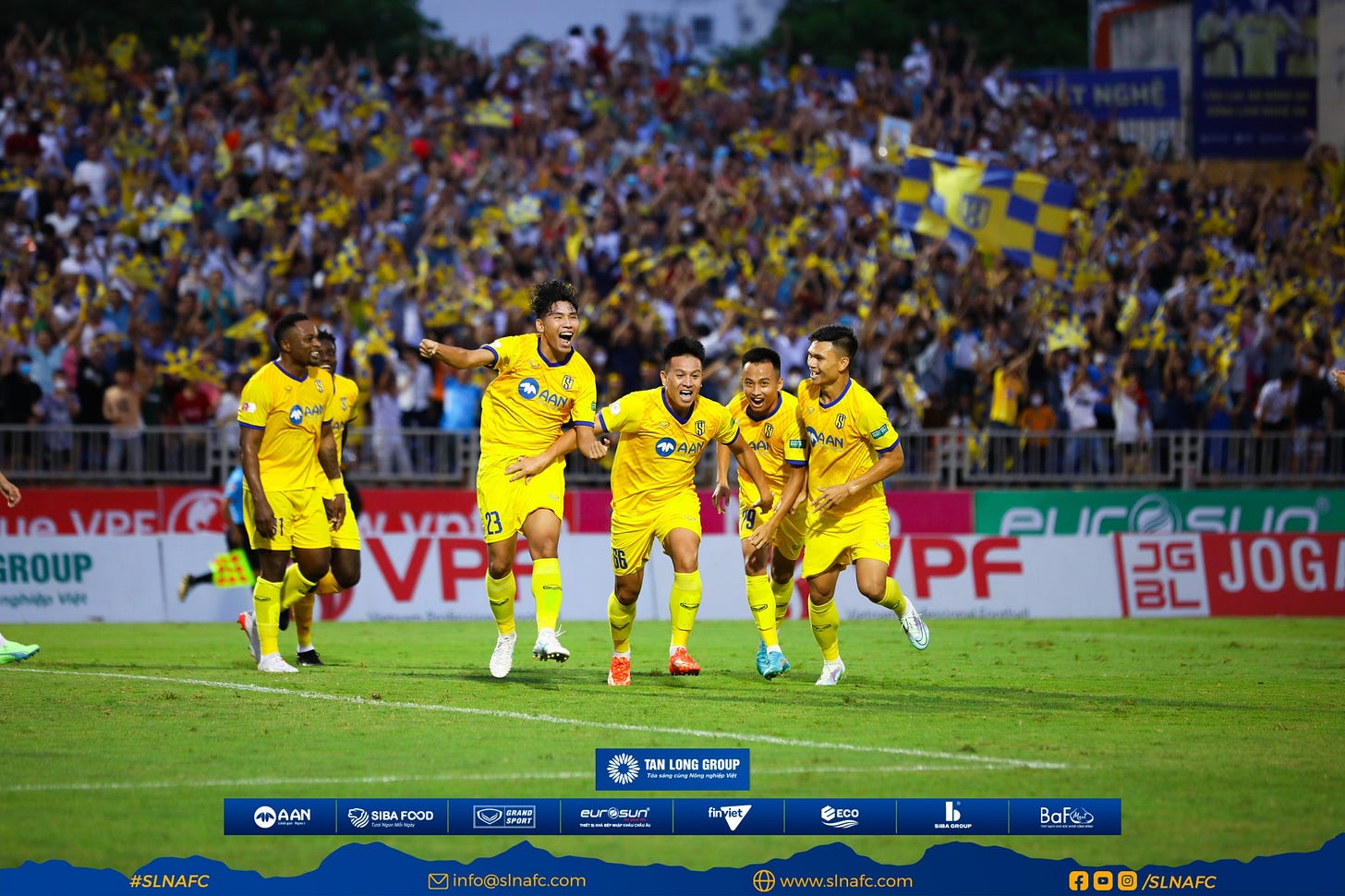How much does it cost to run a football club in Vietnam?
Following last week’s story about the struggle of Da Nang’s youth development, a vital number has been revealed to the press about the club’s financial status. The annual sponsor deal with SHB is worth 60 billion VND and it only covers the senior squad which is playing in Vleague. This number raises a big question that I’m pretty sure everyone is interested but no one actually knows the answer: How much does it cost to run a football club in Vietnam?
First and foremost, football has been always an extravagant business. Most football clubs live off the money from the rich owners (or “ông bầu” as they are called in Vietnam), whether in English Premier League or Vleague. The biggest difference here is the clubs have almost no revenue other than their owner’s pocket. No TV rights (ask VPF and Next Media), no shirts selling while most of the sponsors came from shell companies of their “ông bầu”’s business dynasty.
For instance, in Song Lam Nghe An, TH Group was their main sponsor/owner for 12 years until being replaced by Tan Long Group, another conglomerate belonging to a Nghe An born-and-raise businessman, last year. When TH Group was in charge, the club’s shirt sponsor was Bac A Bank, a subsidiary of TH Group, as same as the case of SHB Bank which is the financial arm of T&T group. This season you could see the logos of A An Rice, BaF and Siba Food which all belonged to Tan Long group on the shirt of the club. Siba Food is named after Truong Si Ba, the owner of Tan Long group and also a board member at VPF, while A An Rice is also the shirt sponsor of Hanoi (it’s a different story that we’ll come back in the future).
Same as in other countries, building the squad is the most expensive part of running a football club in Vietnam. In the first days of their new reign, Song Lam Nghe An announced the contract renewal for the superstar duo Phan Van Duc and Pham Xuan Manh as well as the signing of two former heroes Que Ngoc Hai and Nguyen Trong Hoang from Viettel FC. The combination of signing fees for these four players reportedly cost the club more than 33 billion VND, let alone the construction of a new youth academy, salary raise for the staff, etc. Some sources expect that the new owner could set a budget of 100 billion a year for Song Lam Nghe An.
Another perfect example is Topenland Binh Dinh. Just a few years ago Binh Dinh was still a mess, to the point when they had to loan out their best academy product Ho Tan Tai to Becamex Binh Duong to exchange for financial help. But everything has changed since Hung Thinh Land became their sponsor. The property based in Ho Chi Minh city is building a mega project outside of Quy Nhon called Merry Land Hai Giang and their boss realizes that there’s no better way to promote their brand (and please the government leaders as well) than investing in football. A three-year sponsor deal worth 300 billion VND makes them become a “noveau riche” or “PSG” of Vietnamese football, spending lavishly on both local and foreign players in the most recent transfer windows.
Now let’s get back to the question we mentioned in the first part of this newsletter. 60 billion VND a year from SHB put Da Nang at a medium (or lower) place in Vleague’s financial power ranking. That explains why they couldn’t afford to keep Ha Duc Chinh at the end of 2021 season and have to rely on a bunch of youngsters promoted from the academy. In an interview a few years ago, an official at Nam Dinh admitted that they had one of the smallest budgets in Vleague, roughly 40 billion a year with half of them coming from the provincial government’s budget. So we can agree that 40-50 billion per year is the “survival limit”, which is only enough to cover basic costs like traveling, salary + bonus, etc. To dream about a Top 3 place or winning the title, you likely have to double (sometimes triple like the case of Binh Dinh) that number to strengthen the squad with bigger stars.
So how long these crazy rich owners will commit to the clubs? Will they keep spending millions of dollars every year even after their property projects in that province have been completed? Not everyone loves football in the same way as “bầu Hiển” and “bầu Đức”. Nam Dinh fans are fully aware that Xuan Thien Group won’t stay there forever and the biggest reason behind the 200-billion sponsor deal is the steel factory they are trying to build, not the love for Nam Dinh football. But why have to worry too much about the future when everything is going so well on and off the pitch at the moment? Carpe diem. And whenever a tycoon leaves, another one will step up and starts pouring money again to start a new cycle, like what’s happening in Saigon FC. That’s the beauty of Vietnamese football.
When researching for this newsletter, I found this article from Cafef website published in 2017. According to the author, Song Lam Nghe An FC had an accumulated loss of 417 billion VND (roughly equal to 17.5 mil USD) up until 2017 while Hoang Anh Gia Lai, backed by tycoon Doan Nguyen Duc, recorded a loss of 76.4 billion VND in the single year of 2017. These financial numbers are extremely rare to find in Vietnamese football, where you often see “ông bầu” carry a pile of cash to the pitch to reward the players after each victory. Perhaps there are bigger benefits of running a football club in Vietnam that ordinary people like us cannot understand, like the picture of Hong Linh Ha Tinh’s owner standing next to one of the most powerful men in the country.
Have a great holiday and Happy National Day!
Nguyen-ball



